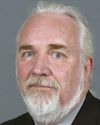moved that Bill C-250, an act to amend the Criminal Code (theft of a motor vehicle), be read the second time and referred to a committee.
Mr. Speaker, it is a pleasure to again rise to speak about one of my private member's initiatives. Once again the Liberal majority on the subcommittee of the Standing Committee on Procedure and House Affairs has decided, for whatever reason, to make this initiative a non-votable matter.
I will not go into a rant about that, but suffice it to say I have to wonder why a select few members of this place are able to control all private members' business to the extent that they and only they decide which issues have even a modicum of opportunity to become law within the country.
It is no secret that many members from all sides of the House have become frustrated and disenchanted with the present scheme, but it will never change unless the government backbenchers forget about the carrots at the end of the stick the Prime Minister continues to hold out for them. Members of this place should be doing what is right for the country. I said I would not get into a rant, so I will move on to Bill C-250.
Bill C-250 is a relatively simple bill. Its purpose is to ensure that a person who is convicted of more than one theft of a motor vehicle receives a minimum of four years' imprisonment for every conviction following the first conviction.
The bill is aimed at the repeat car thief. Before those on the other side and perhaps the member for Saint-Bruno—Saint-Hubert attack me once again for being too tough on our poor misguided criminal offenders, I will point out that I am specifically aiming the legislation at the professional car thief.
As most of us know, professional car thievery is more and more attributable to organized crime. I will illustrate the affiliation between repeat car thieves and organized crime in a few moments.
It would not be entirely correct to claim that this proposal is only aimed at organized criminals in the normal definition of that term. We have a number of criminal organizations that have developed a specialty of stealing motor vehicles just as a form of illegal activity. They might just be a couple of individuals who want to supplement their annual income or they may in fact live for the benefits of their illegal enterprise.
In any case, auto theft is and should be of great concern to the Canadian public. We are all well aware of our increased auto insurance rates due to the escalation in motor theft. From 1986 to 1997, auto thefts in Canada increased by 94%. In 1997, 187,500 vehicles were reported stolen. The problem costs the insurance industry approximately $600 million annually. It only stands to reason that most if not all of that $600 million cost of motor vehicle theft is passed on from insurance companies to those of us who have to insure our vehicles.
Why has motor vehicle theft become such a growth industry? There are a number of factors.
First, with the sophistication of these professional offenders, there is relatively low risk. Most of us have to leave our vehicles outside at some point during the day: when we go shopping, when we drive them to work, when we leave them at the local transit parking lot, or even overnight while we are sleeping. Motor vehicles are often left unattended for minutes or hours at a time and are so common that thieves can approach them with little fear of attracting attention.
Second, there is a high return. With motor vehicle prices rising toward a common value of $30,000 and beyond, it becomes very profitable for crooks to specialize in auto theft.
Third, there is an avoidance of income taxes. Regardless of what the Minister of Finance says, income taxes are particularly burdensome to most of our citizens. One of the exceptions to the cumbersome weight of taxes is the criminal element. Auto thieves avoid paying high taxes or any taxes at all by chopping or disassembling motor vehicles and selling the parts to the parts industry. They also obtain vehicle identification numbers from wrecks, reattach those numbers to stolen vehicles and essentially put a new and improved auto back onto the streets.
I will divert myself for just a moment to give the House just one example of how devastating this practice of switching vehicle identification numbers, or VINs, can be to the unsuspecting buyer. Just last week it was reported how Tammy Mulvey of Ottawa was victimized by this scheme. She is a 22 year old who works for a mobile canteen company. I can just imagine how proud she was when she purchased her first car for $8,000, a 1993 Honda Civic. I do not know that I can imagine how she felt when the police helped a tow truck driver take it away. It was stolen.
Tammy had little protection. She bought the vehicle with a VIN that was free and clear from problems or legal claims. Unfortunately, that VIN did not belong to the car she bought. It was identified by the police as part of a $10 million international motor vehicle theft ring. Tammy was the loser, a victim because that car actually belonged to someone else. A loss of $8,000 at the age of 22 is a nasty life experience for someone just starting out.
What are some of the other factors that ensure that motor vehicle theft is a growth industry? As the example illustrates, organized crime finds it quite profitable. Organized crime also finds many other uses for its ill-gotten gains. Police are convinced that many, if not most, of the biker gangs drive stolen vehicles and motorcycles. With motorcycles it is relatively easy to have three or four individuals pick up a Harley off the street and throw it into the back of a pickup.
We have all heard stories about how criminals use stolen vehicles to commit crimes, crimes like drug trafficking and armed robbery just to mention a couple. A car is stolen. It is used in the offence and is then dumped through various means.
Stolen vehicles with fraudulent paperwork can become a currency within organized crime activity. These vehicles are traded for other items of value. Stolen vehicles have been bartered for drugs from foreign countries. Apparently it is quite simple to ship motor vehicles in those sealed international shipping containers we have all seen travelling across the world on ships, trains and trucks. Many North American vehicles are worth double their value in many foreign countries.
It has become very profitable for organized criminals to steal a luxury vehicle, put it in a shipping container, put it on a ship and sell it to a wealthy buyer, with no questions asked and no international vehicle tracking system in place. We should recognize that many countries have few car dealerships and high tariffs on imported vehicles. These criminals are filling a void that cries out for this form of activity.
The last thing I will discuss about the causes of auto theft as a growth industry has to do with the little risk of jail time for the offence. We have enough difficulty convincing the Liberal government to impose jail time for violent offences. Auto theft is not a violent offence. Our courts often look at auto theft as being protected by car insurance. We all lose a bit but no one suffers a great deal. That is absolutely wrong headed.
Why should we be sponsoring criminals who refuse to abide by the norms of society and who sponge on all law-abiding citizens? Why should we be permitting organized criminals to expand their enterprises, to expand their influence and to increase the threat to society when it is so easy to address just one aspect of their operations? The bill would impose a mandatory minimum sentence of four years on professional vehicle thieves.
I will now provide some anecdotal support for what I have been saying. An RCMP intelligence report dealing with a multimillion dollar organized crime ring whereby luxury cars were stolen and shipped overseas stated:
These groups, motivated by the low risk, huge profits and light penalties associated with auto theft, are operating virtual stolen-car pipelines.
The ring then funnelled hundreds of thousands of dollars to a terrorist organization, according to the RCMP report. We can see how profits from the theft of motor vehicles generates far more serious and dangerous criminal activities. The director of RCMP criminal intelligence said:
There has also been increasing use of violence, including car-jackings and home invasions, to obtain cars.
The president of the Canadian Police Association listed auto theft as one of the major activities of organized crime. Constable Jim Messner of the RCMP auto theft squad in Calgary says that his city has become a shipping hub for stolen high priced vehicles for organized crime rings. He said:
There is no doubt in my mind that the majority of unrecovered stolen vehicles is a result of organized crime. We know organized crime groups have stolen vehicles for a number of things, including transporting contraband.
In one weekend last year, 31 vehicles were stolen in Burnaby, B.C. I do not have the figure for how many were stolen that particular weekend for Vancouver, Surrey, New Westminster or North Vancouver, but 31 vehicles for the Burnaby portion of the lower mainland is a symptom of a major problem. In one seven day period last year, 128 vehicles were reported stolen from the streets of Ottawa. According to Statistics Canada about 450 vehicles are stolen every day in Canada.
All these statistics are in spite of car owners having to ensure their vehicles are locked each and every time they are left alone, and in spite of anti-theft devices and car alarms. Motor vehicle theft is a matter of significant public interest. Unfortunately it does not seem to be of any significant government interest as it has decided not to make the bill votable.
In a recent operation against organized crime police from Canada and the United States were able to lay 270 charges and recover close to $10 million in stolen vehicles. Some 193 vehicles were recovered from as diverse a distribution as Ottawa, Toronto, Waterloo, Texas, Florida and Panama.
For any of those listening who do the math most of the vehicles recovered were from the high end of the motor vehicle industry. Lincoln Navigators, Volvos and Mercedes were particularly attractive to these individuals. Twenty-five people were arrested and at that time the police had warrants for twenty-four others.
It is most unfortunate that many will get a slap on the wrist for stealing vehicles. The authorities will only be able to guess how many vehicles passed through this organization successfully while our police were forced to expend scarce resources on their enterprise. More than 150 officers were involved in this takedown.
It is obviously time to change the law. It is not right that we merely warehouse these individuals for a few months. For them it is merely an opportunity to rest up before returning to our communities to pick up where they left off. For them these lenient sentences are nothing more than a cost of doing business. We must show that as parliamentarians we are very serious about addressing this form of crime.







